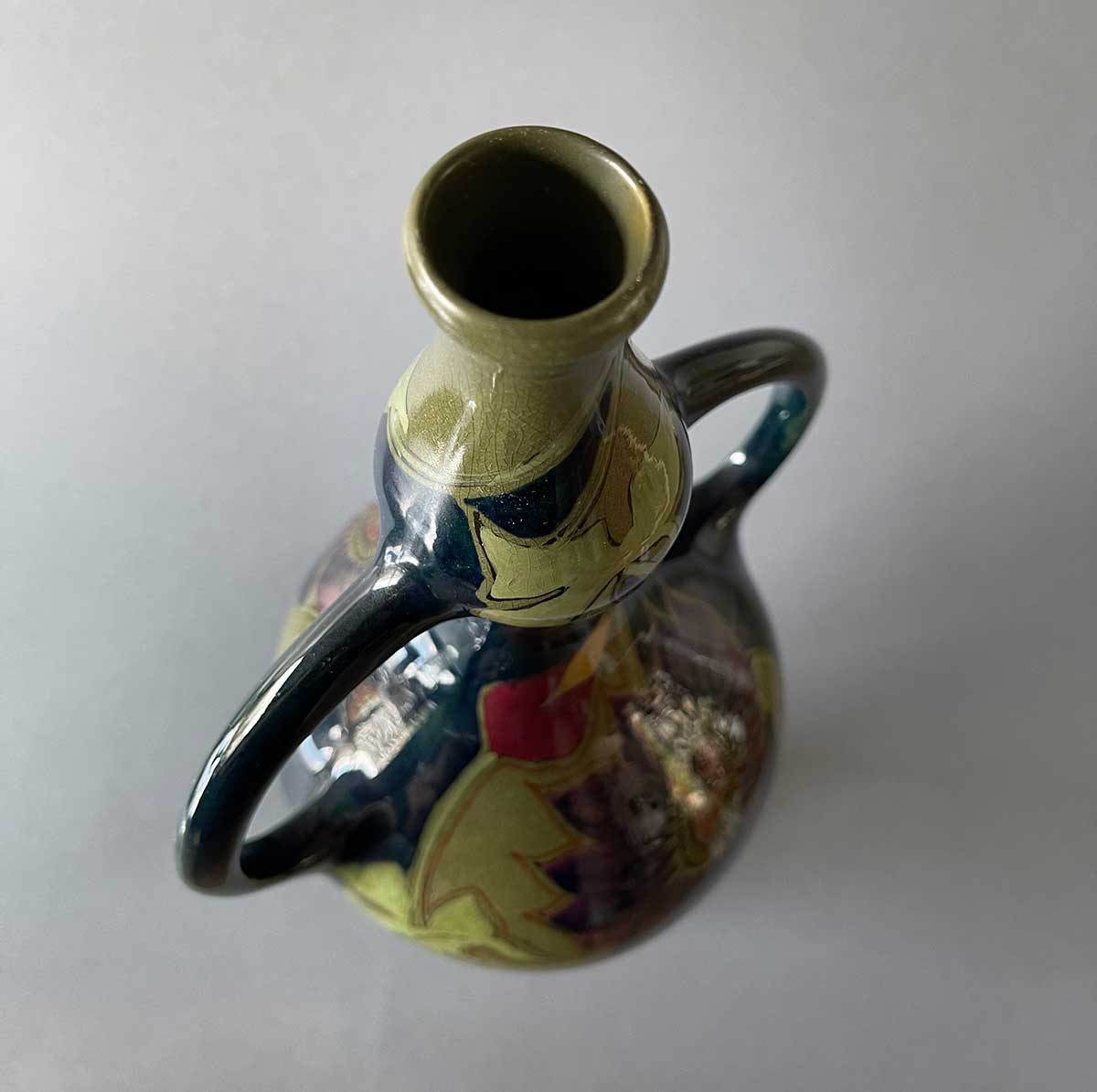The Royal Pottery Factory Zuid-Holland from Gouda is one of the most notabel pottery factories from The Netherlands. Zuid-Holland Gouda produced pottery between 1898 and 1965. The factory is also known as Plazuid and PZH. Especially in the early period, Zuid Holland made high glossed art pottery, hand painted with decors in Art Nouveau style. Later, matt glaze became popular and designs became more modern. The Gouda pottery from Zuid-Holland is collected all over the world.
What is Gouda Pottery
Gouda pottery is the collective name for painted and glazed decorative pottery, made in the Dutch city of Gouda. Gouda had several pottery factories, of which the Royal Zuid-Holland factory was the largest. Other well-known factories are Zenith, Ivora, Hollandia, Regina and Goedewaagen. In the 1920’s and 1930’s, pottery was one of the most important industries in Gouda.
The History of Zuid Holland Gouda Pottery
The Gouda Pottery factory Zuid-Holland was founded in 1898 by a local potter called Adrianus Jonker and Egbert Estié from Purmerend. Estié was previously involved in the establishment of another renowned Dutch Pottery Factory Wed. N.S.A. Brantjes & Co. (1895-1904) from Purmerend. The Zuid Holland Factory was originally called ‘Plateelbakkerij Zuid-Holland, E. Estié & Co’. From his previous experience in Purmerend, Egbert Estié brought a lot of expertise, material and models to the Gouda pottery factory. In 1903 both founders left the factory and B.J.C. Hoyng became the new owner. The name changed to ‘N.V. Plateelbakkerij Zuid-Holland’. In 1930 the factory received the designation Royal and the official name became ‘N.V. Koninklijke Plateelbakkerij Zuid-Holland’.

Gouda pottery flourished until the end of the 1930’s. After that, the factory was hit hard by the global financial crisis. During the Second World War, only utility pottery was made. Because raw materials were scarce, decorative pottery could only be made again from the early 1950s. It’s just a brief revival of the production of decorative pottery. The factory ceased to exist in the mid-1960s, because traditional handicrafts could no longer compete with industrialised production.
Competition with Rozenburg
The Gouda Pottery Factory Zuid-Holland was a successful company and already made a profit in the first years after its foundation. Part of the success was due to the strategy of copying the very popular designs of the Rozenburg pottery factory in The Hague. Especially Rozenburg eggshell porcelain was very popular and very expensive. Zuid-Holland produced earthenware in the factory in Gouda on white fired clay with very similar designs to Rozenburg eggshell porcelain. This so-called P-decor was and still is collected all over the world. The P refers to ‘porcelain’ and designs closely resembled Rozenburg’s designs. After 1908 the term NP (new porcelain) was used for these designs. This is also called ‘Kantjes Plateel’. Kantjes translates into ‘little lace’, referring to the wavy patterns, resembling lace.
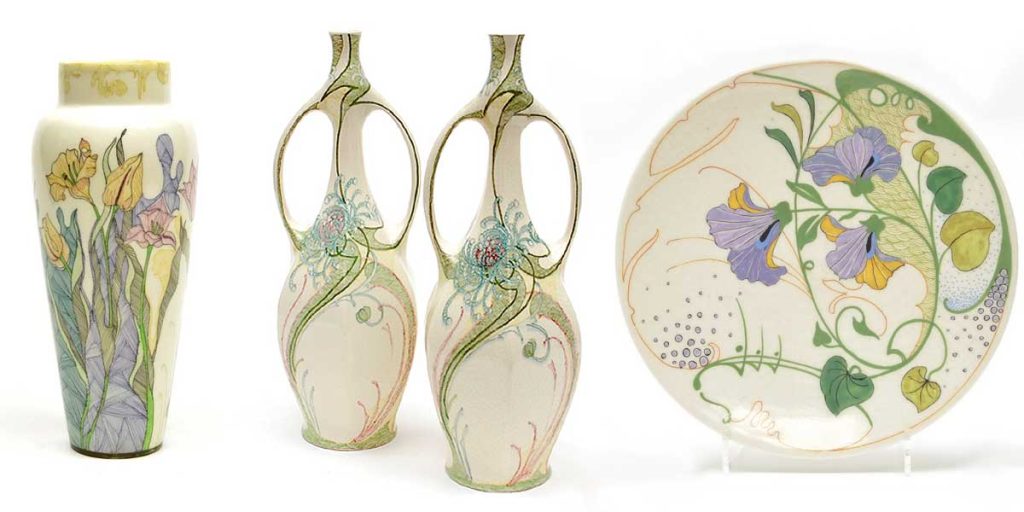
High Gloss and Matt Glazed Pottery from Gouda
The Dutch Pottery Factory Zuid-Holland from Gouda is also known for its own innovations. From 1908 experiments were made with a matt glaze. This innovation was launched at the Leipziger Messe in 1910 and the World’s Fair in San Francisco, USA, in 1915. Matt glazed Dutch pottery were adorned with decorative designs inspired by ancient Greek and Persian patterns. Designs were given equally exotic names such as Rhodian and Damascus. Matt glazed pottery also represents the transition to a new design era, after Art Nouveau slowly went out of fashion in the first decades of the twentieth century. Matt pottery was produced in Gouda until the middle of the twentieth century.

What is Gouds Pottery worth?
Gouda Pottery is very often sold on auctions and digital marketplaces and second hand sites. Especially in the Netherlands. In general, the older the piece of Gouda pottery is, the more it is worth. But of course other factors also play a role: the model, the painter, the size of the pottery and the condition of the ceramic object. Gouda pottery from the early days of the factory (until 1904) often have dark colours, a high-gloss glaze and typical Art Nouveau motifs. The value of these objects can be between 200 and 600 euro’s. Pottery with P and NP decors are also highly sought after by collectors. These object (see pictures above) in general have a higher value. Gouda pottery produced after the 1920’s have a matt glazed finish and are worth much less. Do you own a piece of Gouda Pottery, than we can provide an appraisal. But please know that we specialise in early Gouda from the Art Nouveau periode, in P and NP decors and do not have as much expertise on Gouda pottery from later periods.
Gouda Pottery for sale
I would like to expand my existing collection of early Gouda Pottery. Do you have a Gouda vase or wall chargers for sale? Then please get in touch. Below you see a part of my own early Gouda Zuid-Holland collection, some of which are available for sale, and others are not. These objects belong to my private collection.
-
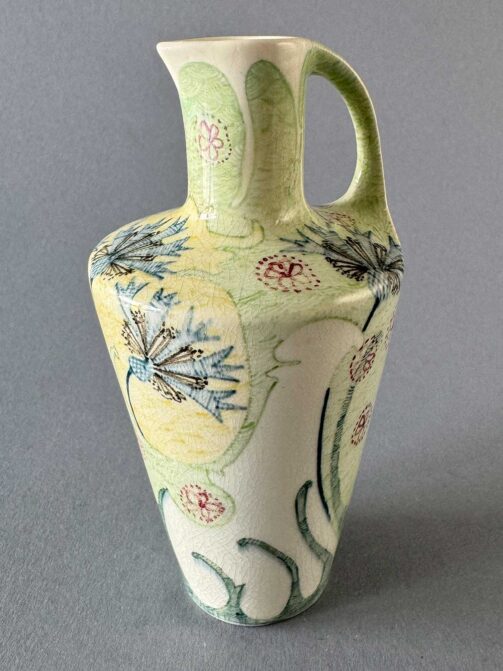 Gouda pottery little ewer, model 341 with P-decor by Johannes Stam, 1901-1902€ 450,00
Gouda pottery little ewer, model 341 with P-decor by Johannes Stam, 1901-1902€ 450,00 -
 Gouda pottery wall charger, 27 cm, with NP decor of orchids€ 400,00
Gouda pottery wall charger, 27 cm, with NP decor of orchids€ 400,00 -
 Gouda pottery tall vase of 45 cm high, painted in a P-decor by Frederika Sanderus€ 750,00
Gouda pottery tall vase of 45 cm high, painted in a P-decor by Frederika Sanderus€ 750,00 -
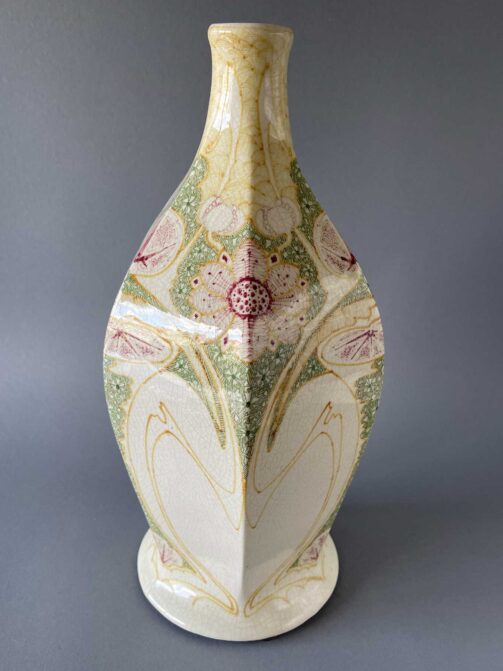 Gouda pottery large hexagonal vase 39 cm, model 5011, made in between 1901-1907€ 1.100,00
Gouda pottery large hexagonal vase 39 cm, model 5011, made in between 1901-1907€ 1.100,00 -
 Gouda pottery tall vase, model 324 of 38 cm high with P-decor by Dirk Bordewijk€ 895,00
Gouda pottery tall vase, model 324 of 38 cm high with P-decor by Dirk Bordewijk€ 895,00 -
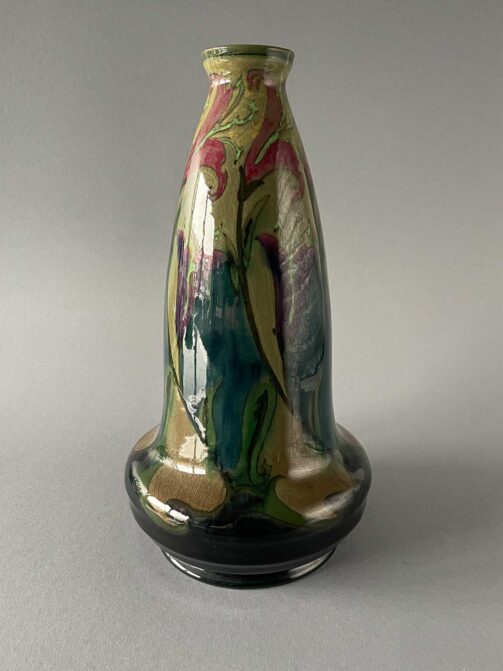 Gouda pottery vase, model 68 of 30 cm in height, with decor of chalices€ 345,00
Gouda pottery vase, model 68 of 30 cm in height, with decor of chalices€ 345,00 -
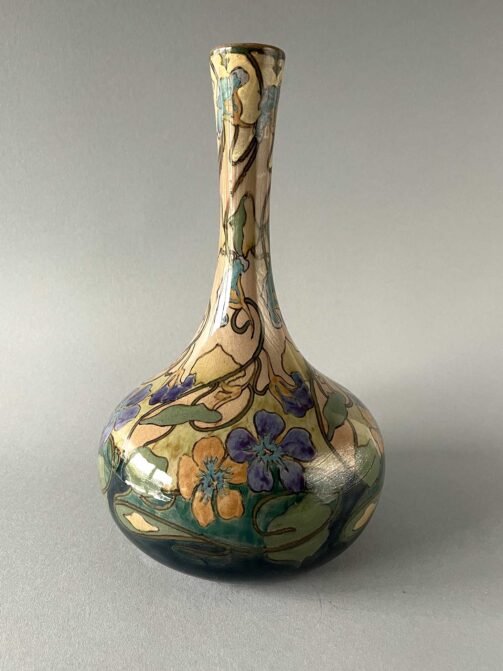 Gouda pottery vase model 251, with floral decor in soft pastels, made between 1900-1902
Gouda pottery vase model 251, with floral decor in soft pastels, made between 1900-1902 -
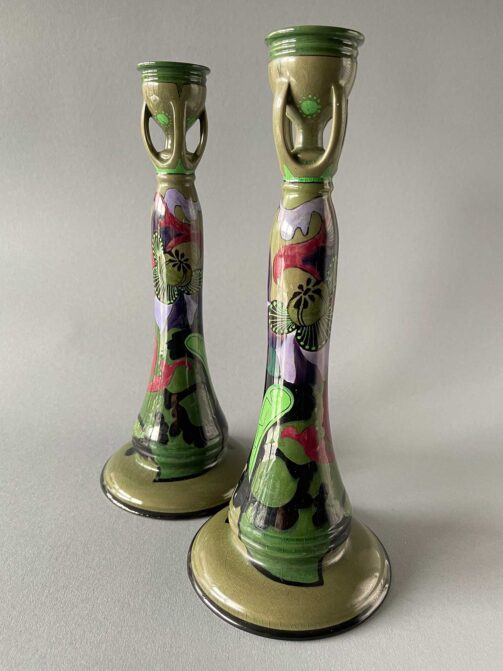 Gouda pottery pair of candle sticks, painted by Johannes Hartgring€ 385,00
Gouda pottery pair of candle sticks, painted by Johannes Hartgring€ 385,00 -
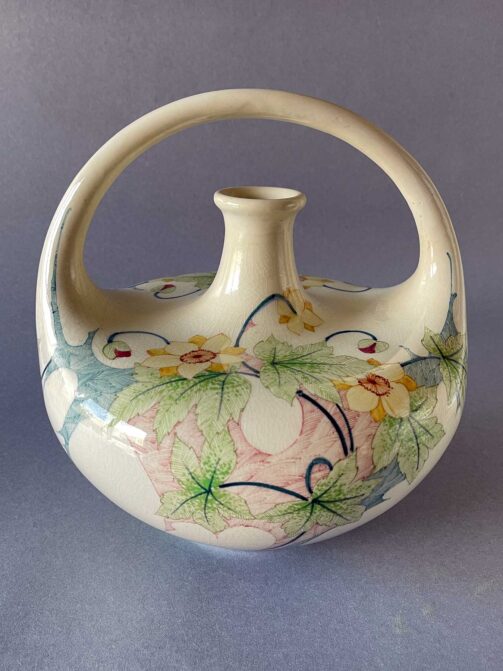 Handle vase from Zuid-Holland Gouda, model 171, with P-decor by Jacob Schoonhoven, 1901-1902€ 780,00
Handle vase from Zuid-Holland Gouda, model 171, with P-decor by Jacob Schoonhoven, 1901-1902€ 780,00

